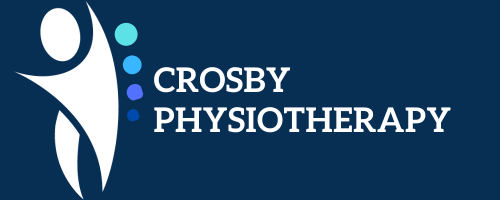There are numerous structures and conditions that can cause shoulder pain, but it is helpful to narrow the problem down to one or more of the following categories :
Sub-Acromial Impingement Syndrome
Shoulder impingement occurs when the structures within the sub-acromial space are compressed between the head of the humerus and the coraco-acromial arch. There are a number of soft tissue structures which may be implicated in sub-acromial impingement syndrome. From superficial to deep they are : the sub-acromial bursa, rotator cuff tendons, the long head of biceps. Rotator cuff tendons are impinged as they pass through the sub-acromial space formed between the acromion, coraco-acromial arch and AC joint above and the glenohumeral joint below. The impingement causes mechanical iritation of the rotator cuff tendons and may result in swelling and damage to the tendons.
The clinical features of impingement tend to be pain on most shoulder movements and activities above 90 degrees elevation and in sports people during overhead activities such as throwing or tennis serving.
Treatment is aimed at settling down the symptoms through soft tissue techniques, electrotherapy, taping, exercises and postural education or corticosteroid injection.
Rotator Cuff Tendinopathy
The patient with rotator cuff tendinopathy complains of pain during overhead activities and possibly weakness on movements such as lifting. Movements such as ‘hand behind the head’ and ‘ hand behind the back’ are commonly reduced and painful. There are numerous tests which the physiotherapist will carry out to ascertain the diagnosis. Should an exact diagnosis be elusive, then referral for an MRI scan and specialist opinion may be required.
Treatment for rotator cuff tendinopathy includes manual therapy techniques, electrotherapy modalities and rehabilitative exercises. A corticosteroid injection into the sub-acromial space may reduce the patient’s symptoms sufficiently to allow commencement of an appropriate rehabilitation programme.
Rotator Cuff Strains / Tears
Minor rotator cuff muscle strains occur commonly in patients seen at the clinic. They usually present with sudden onset of pain or a ‘twinge’ felt in the shoulder area. There is also some limitation of movement and function. These minor strains respond quickly to rest from aggravating activity, stretching and soft tissue therapy.
Complete and partial tears of rotator cuff tendons are commonly seen in older patients who present with shoulder pain during activity. Such patients often complain of an inability to sleep on the affected shoulder. The treating physiotherapist will carry out numerous tests to confirm a diagnosis and may refer the patient for an ultrasound or MRI scan. If the tear is small, conservative treatment with the physiotherapist is appropriate. Full thickness rotator cuff tears require surgical repair.
Frozen Shoulder (Adhesive Capsulitis)
The age group in which spontaneous shoulder stiffness occurs tends to be between 40 and 60 years of age. It is more prevalent in women than men at a ratio of 3:1. It is also more common in patients with diabetes and thyroid disorders.
The diagnosis of frozen shoulder, or adhesive capsulitis, is relatively easy to make. Patients typically present with a combination of severely restricted shoulder flexion, external rotation (hand behind head), abduction and internal rotation (hand behind back).
In terms of treatment, one management option is wait for it to resolve on its own with the aid of appropriate stretching exercises. Otherwise, a combination of manual therapy techniques, postural correction advice and rehabilitation exercises are most beneficial. Should the symptoms not resolve, or prove to be severely limiting and painful, then surgical referral would be indicated.
Why Physiotherapy Works – Don’t Wait Too Long!
Most shoulder complaints which are presented at the clinic are treatable by our team of physiotherapists. Medication prescribed by your G.P. may ease the pain but does not always fix the problem.
With a correct diagnosis in the first instance, the aim of physiotherapy is early pain reduction, regaining any lost range of movement at the shoulder and ultimately a return to full strength and function. By waiting too long, small problems can become bigger and take longer to fix !! You’ve been warned !!

